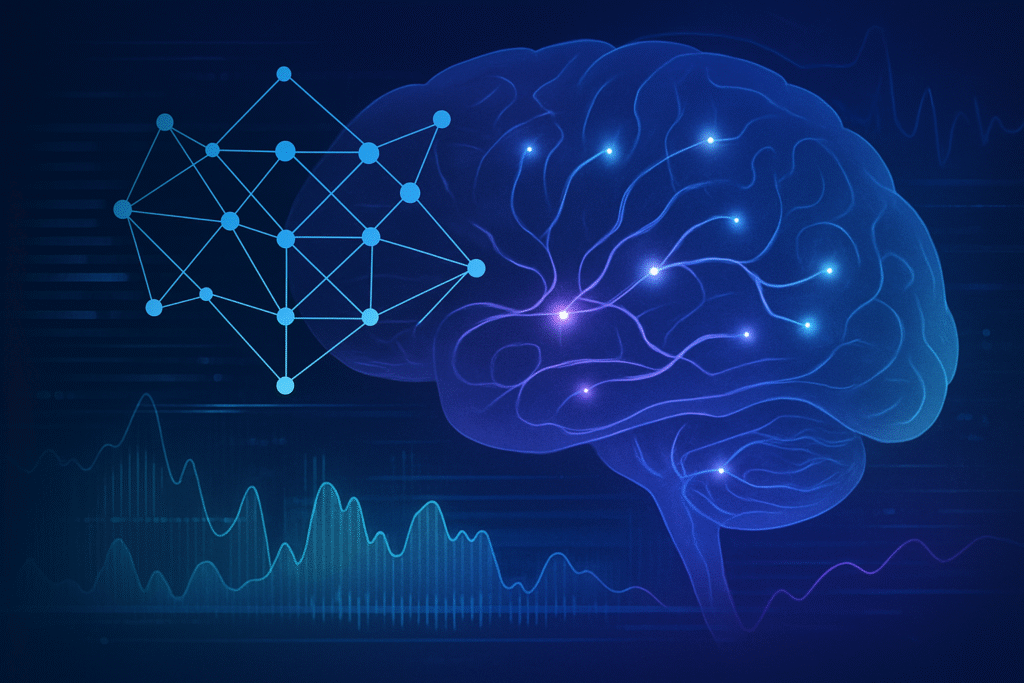
COLUMBUS, OH – October 2, 2025 – In a monumental leap forward for neuroscience and artificial intelligence, researchers at The Ohio State University have unveiled a groundbreaking study demonstrating the successful use of AI tools to predict seizure outcomes in mouse models. By meticulously analyzing subtle fine motor differences, this innovative approach promises to revolutionize the diagnosis, treatment, and understanding of epilepsy, offering new hope for millions worldwide.
The study, announced today, highlights AI's unparalleled ability to discern complex behavioral patterns that are imperceptible to the human eye. This capability could lead to the development of highly personalized treatment strategies, significantly improving the quality of life for individuals living with epilepsy and accelerating the development of new anti-epileptic drugs. The immediate significance lies in establishing a robust, objective framework for epilepsy research, moving beyond subjective observational methods.
Unpacking the AI's Precision: A Deeper Dive into Behavioral Analytics
At the heart of this pioneering research, spearheaded by Dr. Bin Gu, an assistant professor with Ohio State's Department of Neuroscience and senior author of the study, lies the application of two sophisticated AI-aided tools. These tools were designed to decode and quantify minute behavioral and action domains associated with induced seizures in mouse models. While the specific proprietary names of these tools were not explicitly detailed in the announcement, the methodology aligns with advanced machine learning techniques, such as motion sequencing (MoSeq), which utilizes 3D video analysis to track and quantify the behavior of freely moving mice without human bias.
This AI-driven methodology represents a significant departure from previous approaches, which largely relied on manual video inspection. Such traditional methods are inherently subjective, time-consuming, and prone to overlooking critical behavioral nuances and dynamic movement patterns during seizures. The AI's ability to process vast amounts of video data with unprecedented accuracy allows for the objective identification and classification of seizure types and, crucially, the prediction of their outcomes. The study examined 32 genetically diverse inbred mouse strains, mirroring the genetic variability seen in human populations, and also included a mouse model of Angelman syndrome, providing a rich dataset for the AI to learn from.
The technical prowess of these AI tools lies in their capacity for granular analysis of movement. They can detect and differentiate between extremely subtle motor patterns—such as slight head tilts, changes in gait, or minute muscle twitches—that serve as biomarkers for seizure progression and severity. This level of detail was previously unattainable, offering researchers a new lens through which to understand the complex neurobiological underpinnings of epilepsy. The initial reaction from the AI research community and industry experts has been overwhelmingly positive, hailing it as a significant step towards truly data-driven neuroscience.
Reshaping the Landscape: Implications for AI Companies and Tech Giants
This breakthrough has profound implications for a wide array of AI companies, tech giants, and startups. Companies specializing in computer vision, machine learning, and advanced data analytics stand to benefit immensely. Firms developing AI platforms for medical diagnostics, behavioral analysis, and drug discovery could integrate or adapt similar methodologies, expanding their market reach within the lucrative healthcare sector. Companies like Alphabet (NASDAQ: GOOGL), with its DeepMind AI division, or NVIDIA (NASDAQ: NVDA), a leader in AI computing hardware, could leverage or further develop such analytical tools, potentially leading to new product lines or strategic partnerships in medical research.
The competitive landscape for major AI labs is likely to intensify, with a renewed focus on applications in precision medicine and neurodegenerative diseases. This development could disrupt existing diagnostic products or services that rely on less objective or efficient methods. Startups focusing on AI-powered medical devices or software for neurological conditions might see an influx of investment and accelerate their product development, positioning themselves as leaders in this emerging niche. The strategic advantage will go to those who can rapidly translate this research into scalable, clinically viable solutions, fostering a new wave of innovation in health AI.
Furthermore, this research underscores the growing importance of explainable AI (XAI) in medical contexts. As AI systems become more integral to critical diagnoses and predictions, the ability to understand why an AI makes a certain prediction will be paramount for regulatory approval and clinical adoption. Companies that can build transparent and interpretable AI models will gain a significant competitive edge, ensuring trust and facilitating integration into clinical workflows.
Broader Significance: A New Era for AI in Healthcare
The Ohio State study fits seamlessly into the broader AI landscape, signaling a significant trend towards AI's increasing sophistication in interpreting complex biological data. It highlights AI's potential to move beyond pattern recognition in static datasets to dynamic, real-time behavioral analysis, a capability that has vast implications across various medical fields. This milestone builds upon previous AI breakthroughs in image recognition for radiology and pathology, extending AI's diagnostic power into the realm of neurological and behavioral disorders.
The impacts are far-reaching. Beyond epilepsy, similar AI methodologies could be applied to other neurological conditions characterized by subtle motor impairments, such as Parkinson's disease, Huntington's disease, or even early detection of autism spectrum disorders. The potential for early and accurate diagnosis could transform patient care, enabling interventions at stages where they are most effective. However, potential concerns include data privacy, the ethical implications of predictive diagnostics, and the need for rigorous validation in human clinical trials to ensure the AI's predictions are robust and generalizable.
This development can be compared to previous AI milestones such as DeepMind's AlphaFold for protein folding prediction or Google's (NASDAQ: GOOGL) AI for diabetic retinopathy detection. Like these, the Ohio State study demonstrates AI's capacity to tackle problems previously deemed intractable, opening up entirely new avenues for scientific discovery and medical intervention. It reaffirms AI's role not just as a tool for automation but as an intelligent partner in scientific inquiry.
The Horizon: Future Developments and Applications
Looking ahead, the near-term developments will likely focus on refining these AI models, expanding their application to a wider range of seizure types and epilepsy syndromes, and validating their predictive power in more complex animal models. Researchers will also work towards identifying the specific neural correlates of the fine motor differences detected by the AI, bridging the gap between observable behavior and underlying brain activity. The ultimate goal is to transition this technology from mouse models to human clinical settings, which will involve significant challenges in data collection, ethical considerations, and regulatory approvals.
Potential applications on the horizon are transformative. Imagine smart wearables that continuously monitor individuals at risk of epilepsy, using AI to detect subtle pre-seizure indicators and alert patients or caregivers, enabling timely intervention. This could significantly reduce injury and improve quality of life. Furthermore, this technology could accelerate drug discovery by providing a more objective and efficient means of screening potential anti-epileptic compounds, dramatically cutting down the time and cost associated with bringing new treatments to market.
Experts predict that the next phase will involve integrating these behavioral AI models with other diagnostic modalities, such as EEG and neuroimaging, to create a multi-modal predictive system. Challenges will include developing robust algorithms that can handle the variability of human behavior, ensuring ethical deployment, and establishing clear guidelines for clinical implementation. The interdisciplinary nature of this research, combining neuroscience, computer science, and clinical medicine, will be crucial for overcoming these hurdles.
A New Chapter in AI-Powered Healthcare
The Ohio State University's pioneering study marks a significant chapter in the history of AI in healthcare. It underscores the profound impact that advanced computational techniques can have on understanding and combating complex neurological disorders. By demonstrating AI's ability to precisely predict seizure outcomes through the analysis of fine motor differences, this research provides a powerful new tool for clinicians and researchers alike.
The key takeaway is the validation of AI as an indispensable partner in precision medicine, offering objectivity and predictive power beyond human capabilities. This development's significance in AI history lies in its push towards highly granular, dynamic behavioral analysis, setting a new precedent for how AI can be applied to subtle biological phenomena. As we move forward, watch for increased collaboration between AI researchers and medical professionals, the emergence of new AI-driven diagnostic tools, and accelerated progress in the development of targeted therapies for epilepsy and other neurological conditions. The future of AI in healthcare just got a whole lot more exciting.
This content is intended for informational purposes only and represents analysis of current AI developments.
TokenRing AI delivers enterprise-grade solutions for multi-agent AI workflow orchestration, AI-powered development tools, and seamless remote collaboration platforms.
For more information, visit https://www.tokenring.ai/.








